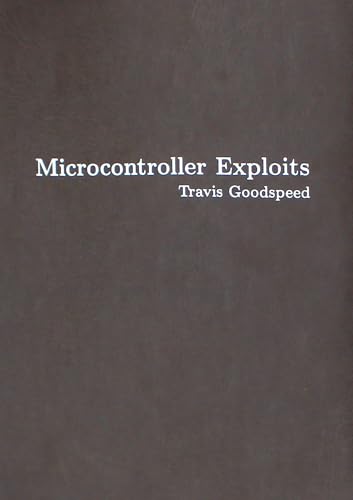Modular exponentiation is a fundamental tool in many cryptographic applications, but its classic algorithms—such as the “square and multiply” method—have vulnerabilities that can be exploited through side-channel attacks. Fortunately, there is an innovative approach that enhances the security of these processes: Randomized Modular Exponentiation. In this article, we will explore this technique by understanding how it works, its benefits, and the mathematical foundations that support it.
The Basics of Modular Exponentiation
At its core, the problem of modular exponentiation is to compute the operation xd mod N, where x is the base, d is the secret exponent, and N is the modulus. This procedure is widely used in cryptography, particularly in public-key algorithms like RSA. The most well-known implementation of this calculation is the Square and Multiply algorithm, which converts the exponent into its binary form and performs a sequence of “squaring” and multiplication operations.
Vulnerabilities in the Square and Multiply Method
Although the algorithm is efficient, it exhibits a critical weakness: the multiplication operation is executed only when the corresponding bit of the exponent is 1. This characteristic can leak information about the exponent during execution, making it susceptible to side-channel attacks. An attacker, by monitoring execution times or other signals, might deduce the bits of the exponent, thereby compromising the system’s security.
The Solution: Randomized Modular Exponentiation
The Randomized Modular Exponentiation technique was developed to mitigate these vulnerabilities. By introducing elements of randomness into the calculation, the algorithm obscures the steps that could reveal the secret exponent. Here’s how it works:
Steps of the Algorithm
- Selection of Random Numbers:
Three random numbers are chosen: r₁, r₂, and r₃. These values are used to modify the original parameters of the computation. - Parameter Transformation:
Using these random numbers, the original values x, d, and N are transformed into new parameters:- x′ = x + r₁ · N
- d′ = d + r₂ · φ(N)
- N′ = r₃ · N
- Exponentiation Computation:
Instead of computing xd mod N, the algorithm computes x’d’ mod N’. After this step, the result is reduced modulo N to recover the final value. - Final Result:
The obtained value, even after the modifications and the use of random numbers, is equal to xd mod N. However, the intermediate process prevents the secret exponent d from being revealed through the analysis of the operations.
Mathematical Foundations: Euler’s Totient Function and Euler’s Theorem
The security of the randomized method is deeply rooted in number theory concepts, particularly Euler’s Totient Function and Euler’s Theorem.
Euler’s Totient Function (φ)
Euler’s totient function, φ(N), is defined as the number of positive integers less than or equal to N that are relatively prime to N. For example:
- φ(2) = 1
- φ(3) = 2
- φ(5) = 4
- φ(10) = 4 (since only the numbers 1, 3, 7, and 9 are relatively prime to 10)
Moreover, for two numbers m and n that are relatively prime, the property φ(m·n) = φ(m)·φ(n) holds, simplifying many calculations in cryptography.
Euler’s Theorem
Euler’s Theorem states that for any integer a that is relatively prime to n, we have:
aφ(n) mod n = 1
This relation is crucial for various operations, such as computing the modular inverse, and it also ensures that after modifying the parameters in the randomized algorithm, the final reduction modulo N returns the correct value.
Advantages of the Randomized Approach
By using Randomized Modular Exponentiation, it is possible to:
- Obscure the Secret Exponent: The randomness incorporated into the process prevents the pattern of multiplications and squarings from revealing bits of the exponent d, protecting against side-channel attacks.
- Maintain Computational Correctness: Despite the modifications, Euler’s Theorem guarantees that the final result remains equivalent to the original computation xd mod N.
- Enhance Cryptographic Security: This approach adds an extra layer of security, making systems more robust against sophisticated attack techniques.
Conclusion
Randomized Modular Exponentiation represents a natural evolution of traditional modular exponentiation algorithms. By integrating randomness with solid mathematical foundations, it offers an effective solution to neutralize the vulnerabilities inherent in the Square and Multiply method. This technique is a clear example of how mathematics and innovation can work together to strengthen the security of cryptographic systems.
If you work in cryptography or are interested in understanding more about the mechanisms that protect our data, exploring Randomized Modular Exponentiation is a crucial step in learning how to tackle the challenges posed by side-channel attacks with intelligent, mathematically grounded solutions.
Related Articles
To deepen your understanding of modular exponentiation, side-channel attacks, and defense strategies, check out the following articles:
- “Modular Exponentiation: Fundamentals, Applications, and Hardware Security Challenges”: Discover the fundamentals of modular exponentiation, its applications in cryptography, and the associated security challenges.
- “Side-Channel Attacks: Exploring Vulnerabilities in Modern Cryptography”: Learn how side-channel attacks can compromise cryptographic systems and the strategies that can be used to mitigate them.
- “Power Analysis Attacks: Unveiling SPA and DPA in Cryptographic Security”: Explore how power analysis attacks work and what countermeasures can be implemented to protect systems.
These articles complement the topics discussed here, offering a comprehensive view of cryptographic security and techniques to mitigate vulnerabilities.





